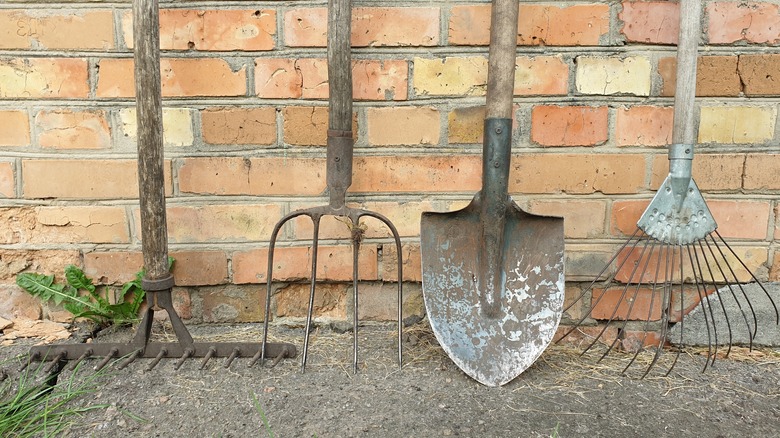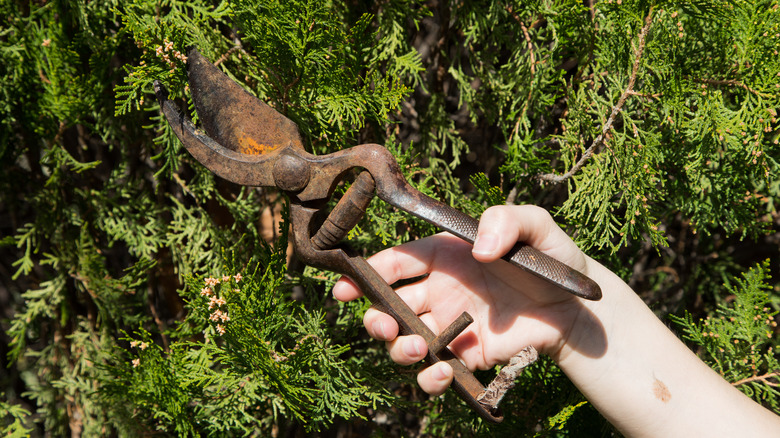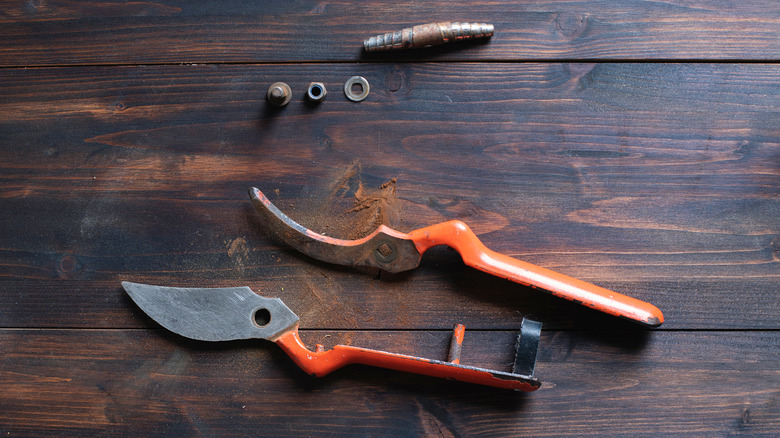Crucial Reasons Why You Shouldn't Use Rusty Garden Tools
Whether you're an avid gardener or a reluctant caretaker of an overgrown yard, you probably have a few garden tools laying around the garage or tool shed. When stored properly, these tools should be clean and effective. However, when stored in a humid environment, or subjected to the passage of time, garden tools can get a little rusty. That's a problem for the tools' longevity. You probably already know that rust is a form of corrosion. That means that when left untreated, rust eats away at metal. As metal pieces flake away in the rusting process, these tools are gradually rendered weak and useless. As garden tools become brittle, they can eventually break during the course of regular activity, like a shovel digging into the earth or a garden fork cutting through stubborn weeds.
Not only is this inconvenient, but it can cause injury to the gardener if broken metal nicks the skin. While cuts from rusty objects have a reputation of leading to tetanus, this is not exactly the case (via McGill University). In reality, any cut could potentially increase the risk of the disease, which is caused by the bacteria Clostridium tetani. That said, this bacteria is often found in a garden setting. So whether you're cut by a rusty garden tool or something else entirely, you may want to consider a trip to the doctor for a tetanus booster if it's been more than 10 years since your last shot (via Mayo Clinic).
Rusty tools can harm your plants
Not only are rusty tools potentially hazardous to themselves and to the gardener, but they can also harm plants when they become weaker. It's this very ineffectiveness that makes them a potential threat to your plants. Let's take a pair of pruners, for instance. When sharp, a decent pair of pruners will slice easily through a branch. The result is a clean cut that heals nicely, and without inviting infection. However, trade those sharp pruners for a rusted pair and you won't enjoy the same results. Rust dulls a tool's blade and makes joints and moving parts stiff. They require more effort to open and close. So, in the process of using these cumbersome tools, it's easy to tear branches. Jagged edges aren't just unsightly, but they can actually impair a tree's ability to heal itself. As cut edges take longer to heal, pathogens make their way inside a tree, leading to disease.
Additionally, rusty shovels, garden forks, and other tools can transfer disease from one part of the garden to the other. This process occurs not necessarily because of the rust itself, but because rusty tools have not been sufficiently cleaned. It's crucial that tools be cleaned in between uses, especially when you're working around plants you know are infected with fungal or bacterial infections.
How to prevent rust
As with most things, the best way to treat rust is to stop it before it starts. This begins with cleaning after use. First, rinse them with a garden hose. If necessary, use a stiff brush to remove soil or plant matter. Next, sterilize the tools. Do this with a diluted 10 to 1 ratio of water and bleach. After washing the tools, dry them and then apply an oil indicated for use on metal tools to protect them from oxygen and water. This could be linseed oil, Tung oil, or camellia oil. Finally, store tools in a cool, dry area. Some people swear by a little WD-40 to keep pruners in good condition.
If your tools are already plagued by rust, you can often restore them with little effort. As long as they aren't too far gone, that is. If a tool has been rusted for a long time, a significant part of the metal may have fallen away. If a shovel has holes, or an uneven blade due to rust, for instance, it's time to say goodbye. Take a similar approach to other tools, as well. However, small patches of rust can be removed with a stiff wire brush or a fine steel wool. More extensive surface rust can be treated by soaking tools in white vinegar for eight hours before brushing away the rust. To reach all the rust, you may need to disassemble tools before cleaning.


